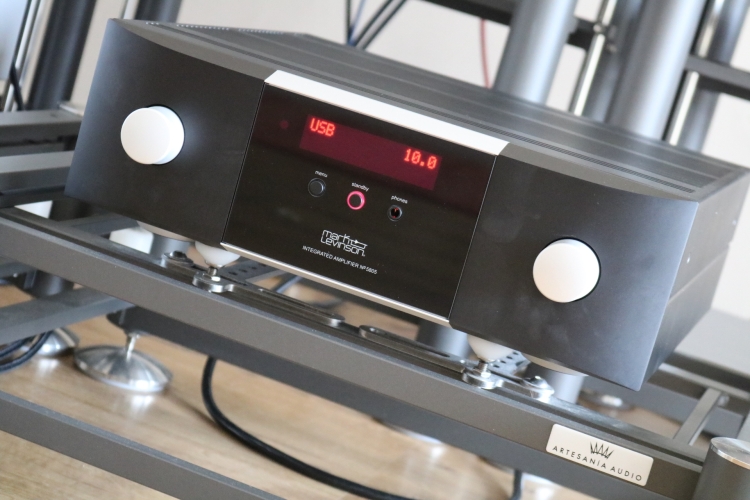
Review sample supplied by Reference Sounds
Retail Prices in the Netherlands (incl 21% VAT):
5802 (digital inputs only) – 7.990 euro
5805 (analog and digital inputs) – 9.190 euro
When the legendary brand Mark Levinson released their first integrated amplifier at the turn of the century, this was a huge sensation. As the main responsible brand for the start of the High-End revolution, the company was until that moment only known for releasing very expensive components. And now a real Mark Levinson pre- and power amplifier in a single chassis could be had for less than 9000 euros? The price list that I have from 2000 has the 383 listed for 19,800 Dutch guilders (8.984 euro not accounting for inflation) and in a later price list from 2003, it is indeed 8999 euro. Agreed, this is still not pocket change, but it made the brand accessible to many more people than ever before. We are now 19 years further and of course, the people at Mark Levinson have pushed ahead. In 2015 the 585 was introduced for just under 14,000 euros. The 585 is still part of the current product range and it is now also available as a 585.5 with an integrated phono preamp.
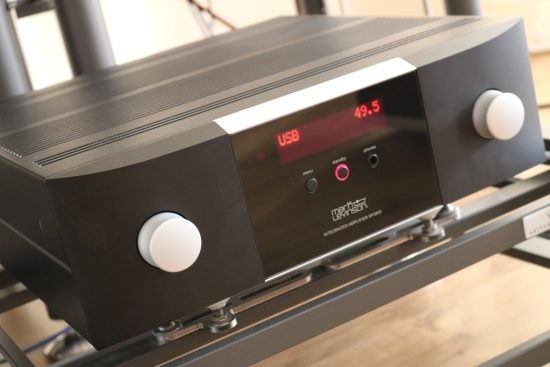
At the time of the 383, the Madrigal team was responsible for the technical side of the Mark Levinson designs. Today there is a new Engineering team led by chief engineer Todd Eichenbaum. For many years, Todd was the right hand of Dan D’Agostino in the peak era of Krell Industries. After the development of the 585, a new goal was set: placing the amplifier line on the market at a considerably lower price level than the 585, while maintaining all of the Mark Levinson quality. To this end, it was decided to make two amplifiers for different target groups. The 5805 with analog inputs and built-in DAC and the 5802 with digital inputs only. In this way, the electronics for each design could be set up as efficiently as possible and no concessions have been made in that regard. The only points where you can see that these are relatively more affordable amplifiers are in the finish. The industrial design is still beautiful, but the use of materials has been made to be more cost-effective. The cabinet is made of thinner and less stiff metal, the feet are smaller and simpler, the buttons on the central part are plastic rather than aluminum and a less attractive display type is used. The two most important knobs for volume and input are, however, unchanged and still made from solid aluminum and they feel very robust.
It is an interesting development: where many high-end manufacturers are introducing ever more expensive products with prices of 20,000 and 30,000 euros and much higher too, Mark Levinson brings these products on the market for 7.990 and 9.190 euro respectively. It’s as if Mark Levinson are ignoring the inflation of the intermediate 17 years!
Technical
As far as I know, the 5805’s volume control method is unique. The amplifier contains two completely separate volume controls: a digital control for the digital inputs and an analog control via an R2R resistor network for the analog inputs. Other amplifiers use an analog volume control whereby the digital inputs are thus attenuated in the analog domain or they use a digital volume control where the analog inputs are therefore always digitized. The 5805 uses the respective control exactly where it is most appropriate.
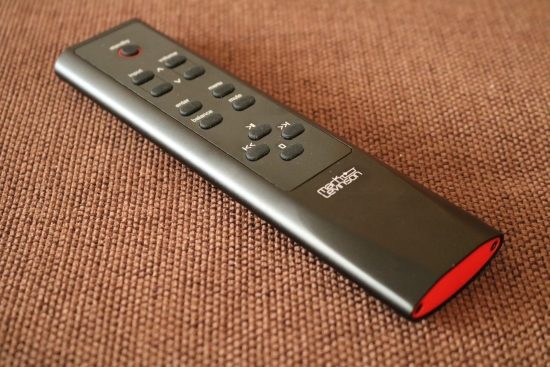
Note the distinctive red battery cover on the IR remote control

All popular digital inputs are available: USB, coaxial and optical SPDIF with support up to 192kHz / 32 bit PCM and DSD 5.6 decoded by the Mark Levinson PrecisionLink II DAC. This includes an ESS Sabre 32 bit converter with jitter suppression followed by a fully balanced discrete current/voltage converter. The DAC even supports MQA whereby it fully unpacks the signal. On the analog section, there are two cinch inputs and one XLR input. There is also an analog Home Theater passthrough input, an MM/MC phono input and a Bluetooth connection that supports AptX-HD. The phono input is a hybrid active/passive RIAA equalizer that uses precision resistors and polypropylene capacitors. The resistance and capacitance are set using DIP switches on the back but the high pass filter, the gain, and the choice between MM and MC can be conveniently controlled from the listening position using the nicely made full metal remote control. All of this can also be controlled via Ethernet by typing in the IP number of the amplifier into any web browser on a computer, tablet, or telephone.
The power amplifier part is impressive as well. The voltage portion of the amplifier circuit, directly derived from the 534 power amplifier, is coupled to the output stage consisting of two fast driver transistors operating in class A that transfer the final signal to six 260 Volt, 15 Ampere output transistors. Values of 125 watts at 8 ohms doubling into 4 ohms and lasting stability up to 2 ohms are a clear indication that the 5805 should be able to work with almost all speakers.
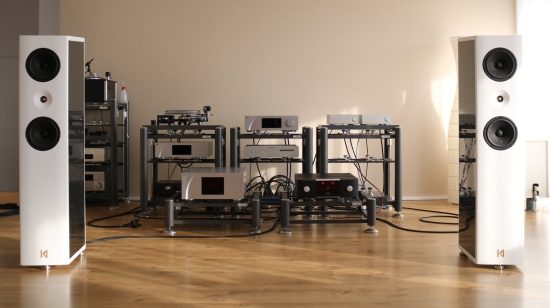
System Context
The 5805 amplifier will be reviewed using the Antipodes CX+EX server/renderer combo and the Kroma Audio Carmen loudspeakers. For comparison, I used my own CH Precision C1 DAC and A1.5 amplifier as well as the Anthem STR pre- and power amplifiers that are the subject of another review.
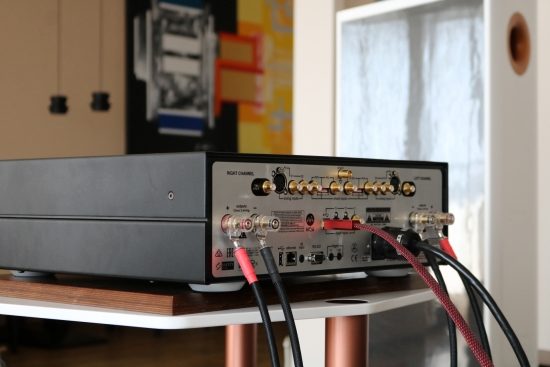
Listening via USB
Using the Antipodes CX + EX server/renderer combo directly via USB and Kroma Audio Carmen loudspeakers, the 5805 sounded fantastic even after having been switched on for only a few days. The 5805 is indeed the first Mark Levinson amplifier that I hear in my system, but based on the experience I have gained with Mark Levinson preamps, drives, CD players, and DACs, I definitely hear a family character. The presentation is highly resolving and refined, but also relaxed and supple, with a full-bodied and suave midrange and a beautifully articulated bass with just the right amount of body. What the 5805 absolutely is not is bright or flat. Rather, it is the opposite: clearly very high res but also highly refined, fluid, relaxed, and silky-smooth. Rich in tonality yet tight and fast, this amp combines aspects that don’t often go hand in hand in a single product. It is a sound that you can easily listen to for hours on end. This is a true Levinson, so much is clear!
Mind you, the results recorded so far were reached by the 5805 alone, so without the help of an external DAC. My reference amplifier and -DAC are the C1 and A1.5 from CH Precision where I have connected the DAC directly to the power amplifier and use its hybrid analog/digital volume control. These components together have a hefty price tag that is roughly 10x that of the Levinson. And indeed, this pair performs better than the 5805 on a number of points. But the concessions made by the Levinson are not exactly earth-shattering and partly also a matter of taste.
The Levinson is almost as refined as the CH combination, even smoother and even close in terms of low-level resolution. Where the CH combo performs better most clearly is in the differentiation of fine dynamics and in the impulsivity of the transients. In other words, the Levinson is slightly less direct and explicit. This manifests itself, for example, in the bass which is rounder and less articulate than with the CH combo and in the midrange which is a bit thicker and a little less acoustically convincing. By that, I mean that with the CH system you are more easily under the impression of listening to a live band faster than with the Levinson. But then we are mainly talking about the degree of tightness and the timbre and these are also very personal matters. The 5805 is not slow or thick at all, just less ultra-tight and lively than the CH A1.5 amplifier, which admittedly is a champion in these areas.
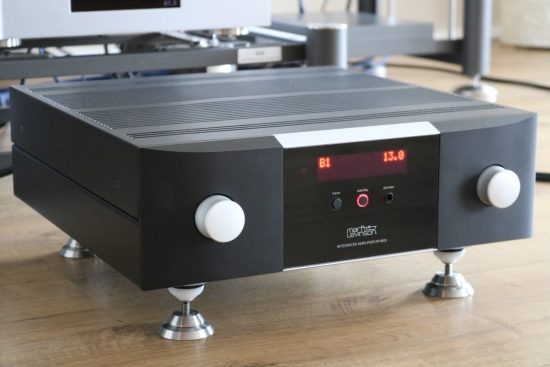
On Artesania Standalone Isolation Bases the 5805 worked really well
Lest I made the impression that the 5805 is slow or undynamic, then let me correct that right away. This amp is just spot-on in terms of pacing. Yes, the CH A1.5 is faster and the Kromas certainly like it that way but that amp is all the way at the extreme end in the speed and articulation camp. Dynamically, the 5805 is great, especially when it is placed on a solid surface. It sounded best when placed on the Artesania Modular rack which is part of their new Organic Line. This rack made the amp produce the tightest bass and most impactful sound overall.
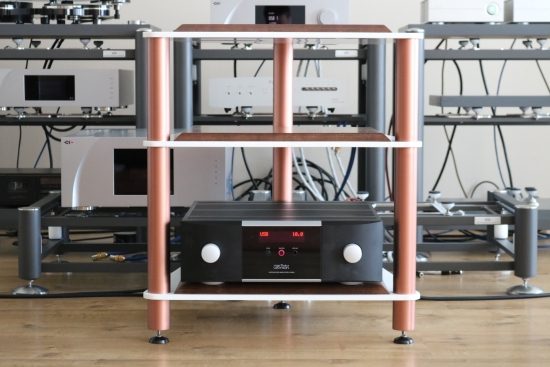
On the Artesania Modular Rack, the 5805 sounded most solid and sonorous and, overall, most impressive
The Artesania Aire floor platform (which is basically a single-level Exoteryc rack) makes the Levinson sound smoother and more relaxed and free-flowing as well as arguably more romantic but it also takes away a little transient sharpness and a bit of attack. This rack works very well with the CH products and other very neutral components and it even compensates a little for components that are themselves on the dry side but the Levinson is anything but dry. Even when using its USB input and, consequently, bypassing its internal analog preamp and using a digital volume control, the amp flat-out refuses to become dry even in the slightest.
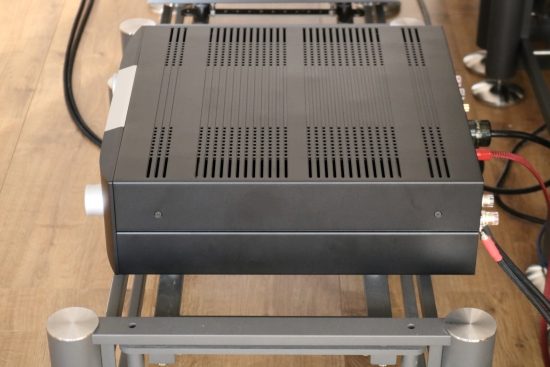
On the Artesania Aire platform, the 5805 sounded most fluid and relaxed
So far the Levinson played with its built-in DAC and then the question arises, how good is that DAC anyway? Well, very good, actually. There’s a reason for my being so very impressed already while I have not even tried an external DAC.
Recently I reviewed the 30K Goldmund Telos 590 and my conclusion was that, yes, it is expensive but it is also the best integrated amplifier with built-in DAC that I have heard. In retrospect and comparing with the Levinson 5805, if the money is no object then I would still opt for the Telos 590 purely based on its performance, but I must also note that it is amazing how great the Levinson sounds for less than a third of the price. They have different characters and will cater to different tastes, but purely technically, the Levinson is really not that far behind. And if you then compare the very spartan functionality of the Goldmund with the wealth of options of the Levinson, the latter becomes an even better deal.
Also present for a review is the Anthem STR preamp and power amp which as a combo at 10K is roughly 1000 euro more expensive than the Levinson. A separate review will be forthcoming but I can already disclose that the two brands have very little in common sonically. Technically, the STR combo is interesting because it has even more options than the Levinson but soundwise, the two could not be more apart. The Levinson has a majorly sophisticated, rich, and ultra-refined delivery and in these areas, the Anthem combo ranks considerably lower, in favor of sounding significantly more impactful and more direct. Such is the boldness of the Anthem combo, that one needs to acclimatize after switching either way, not only between the Levinson and the Anthem combo but also when switching between the Anthem combo and the CH Precision A1.5. So, this is a bit of a polarizing matter and the decision between the two will be a very personal one.
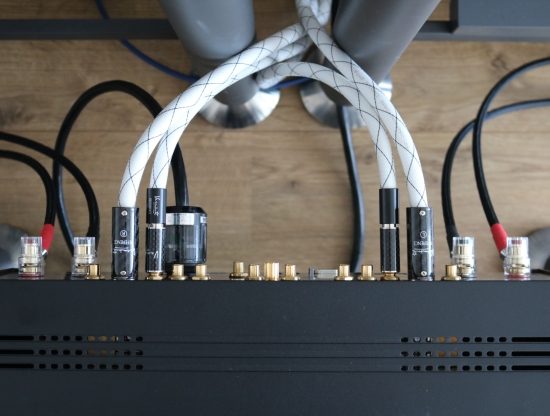
Listening with the analog inputs
When I switch from the built-in DAC to the C1 DAC via Vermouth Reference XLR interlinks, the sound becomes noticeably more articulate and more lively, but also more robust and more transparent. The midrange also becomes more communicative and in fact comes closer to the presentation of the CH combo, but without losing any of the pleasant warmth and fluidity of the 5805. This demonstrates two things to me. Firstly, the 5805 is an even better amplifier than I thought. Secondly: the built-in DAC section is absolutely very good, but there is room for improvement in this area. And that this happens with the 40K-C1 is not surprising. For the sake of good order, I have also included the slightly more “affordable” Aqua Formula xHD DAC in the tests. Although not as solid and full-blooded as the C1, the Aqua has a similar effect on the 5805 compared to its internal DAC, also making the sound tighter, livelier and more transparent. It should be noted that the Aqua still costs a hefty penny at over 13K. If you want to surpass the quality of the built-in DAC, it seems you will have to bring a very good external DAC and I suspect that anything 2000-3000 euro is the minimum to spend in order to make a convincing improvement.
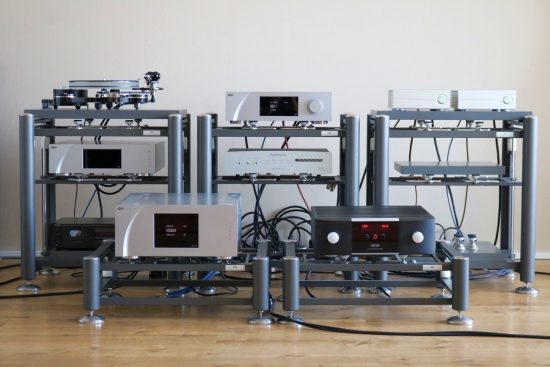
Phono, Menu, and Filters
The cinch input is 6dB softer than the XLR input, but this is very easy to compensate for through the setup menu in which the gain of each input can be adjusted separately. This menu offers a lot more items that can be set, such as the name of the input, the DSD filter type, the PCM filter type, the PLL lock range, and upsampling on or off. Alas, I did not get around to listening to the built-in MM / MC phono section. But given the other results with this amplifier, I have absolutely no doubt that this facility will also be highly competent.
With upsampling switched on, the amplifier is airiest and smoothest and with the upsampling switched off, it is more earthy and tighter in the bass. Again this is a matter of taste in which, despite my preference for tight bass, I thought the amp sounded best with the upsampling switched on. When the amplifier was delivered to me, the DAC was set to the Fast Minimum filter. There are quite a few alternative settings that I have tried, but although this can make a lot of difference with other DACs, I find the differences in this case very small, almost too small. There are subtle changes, but the basic character of the amplifier remains unchanged.
Conclusion
I can be very brief about it. The 5805 is a very complete and absolutely great sounding amplifier. I think it will be very difficult for the competition to match this level of performance in this price range. In addition, there are precious few amplifiers that can be configured so extensively and even fewer that allow this via IR remote or Tablet right from the listening position.

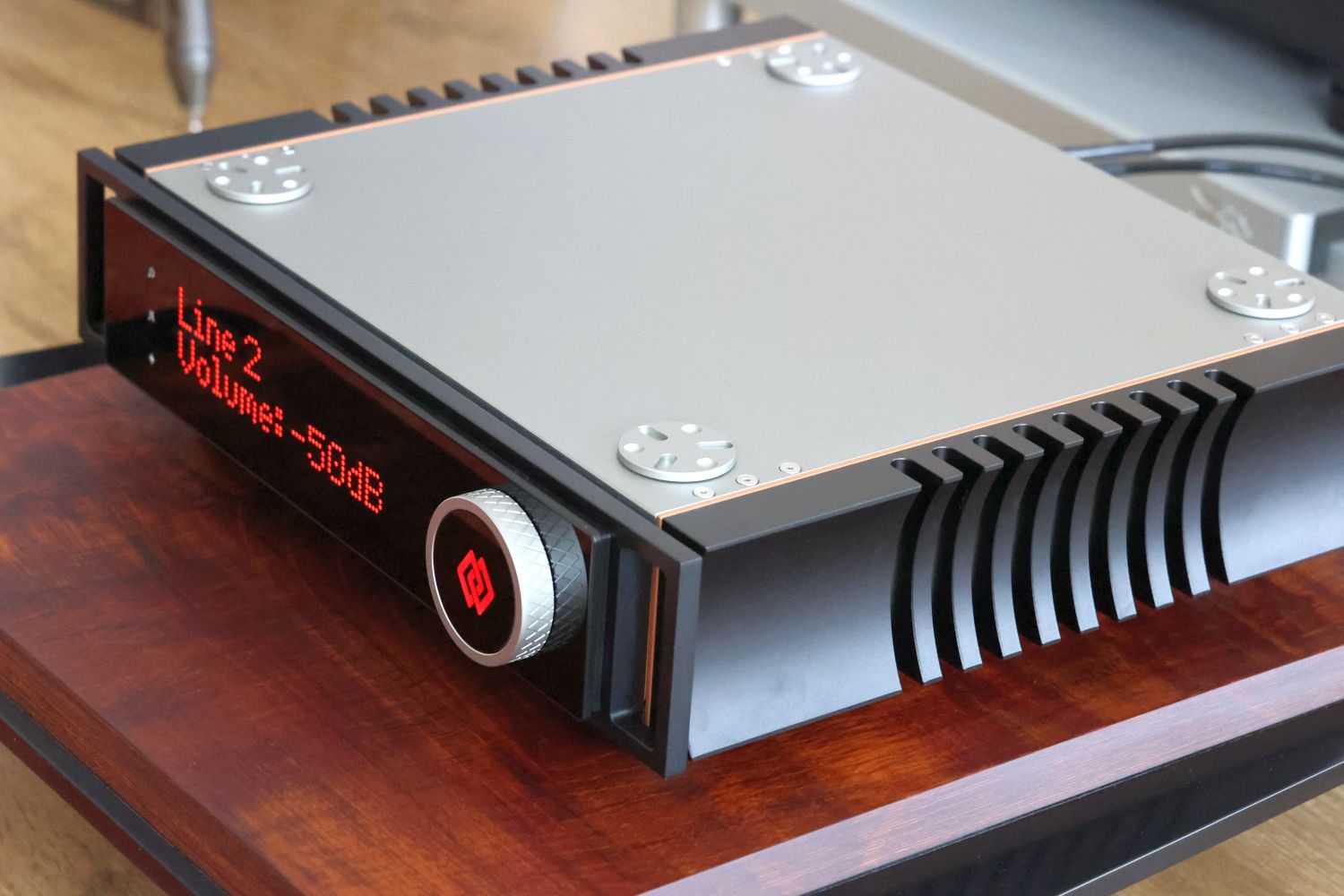
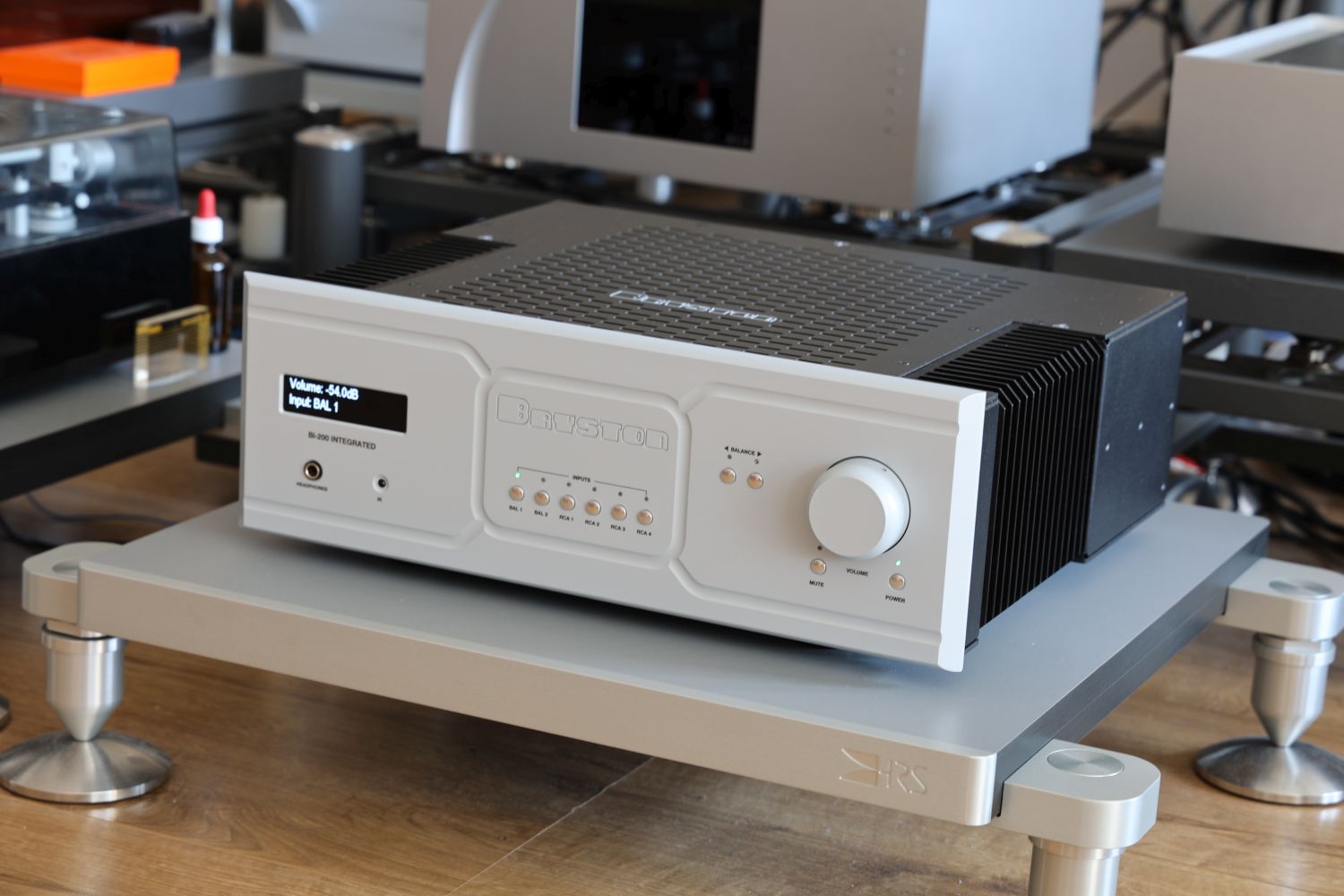
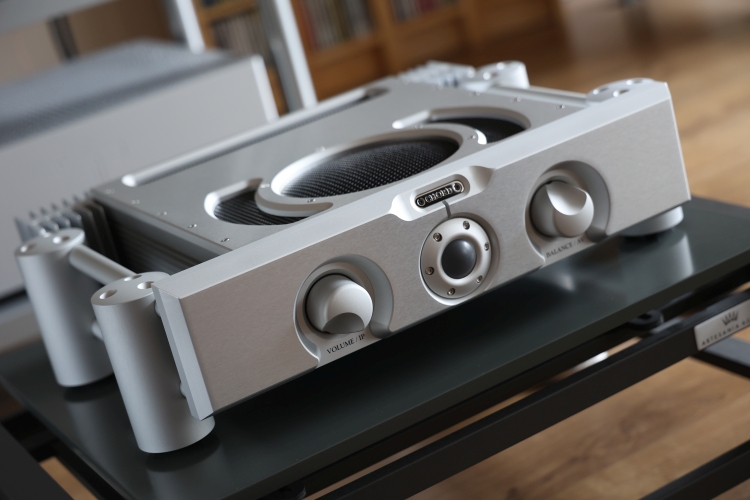
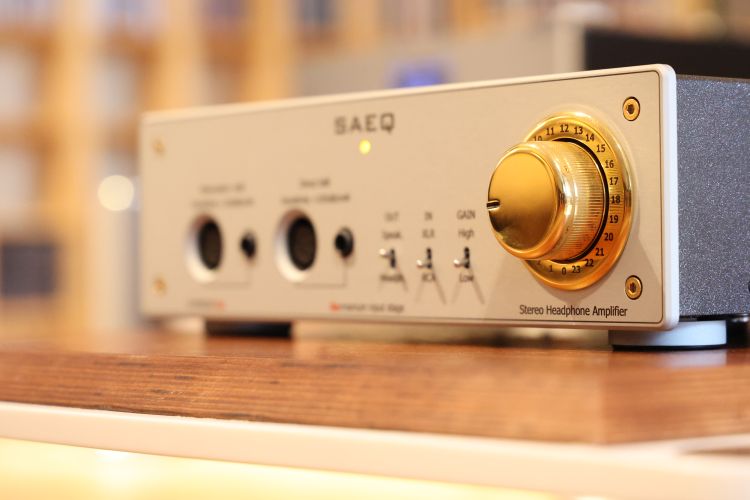
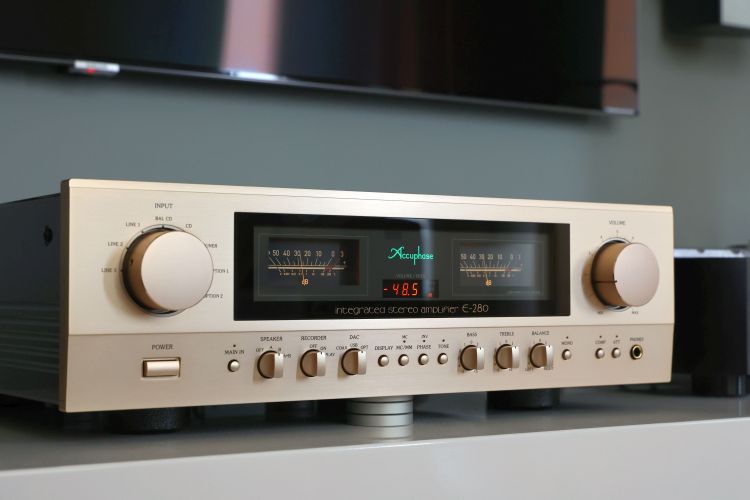
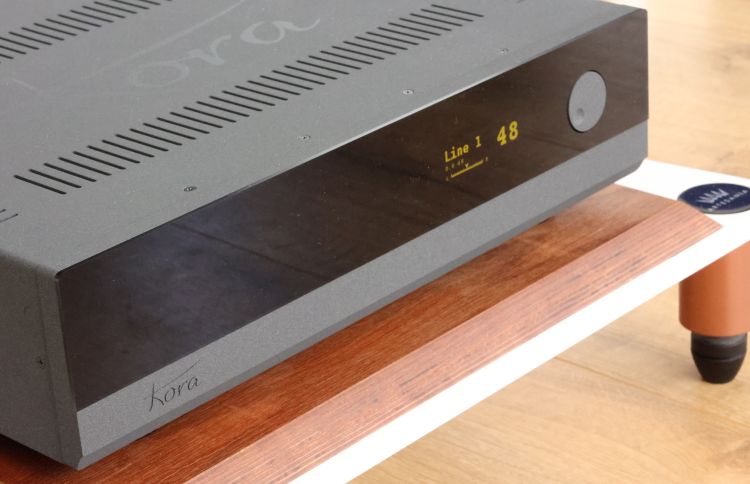
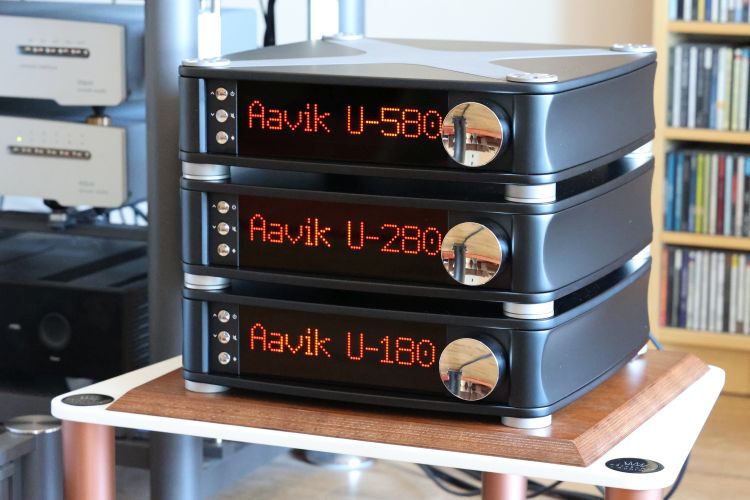
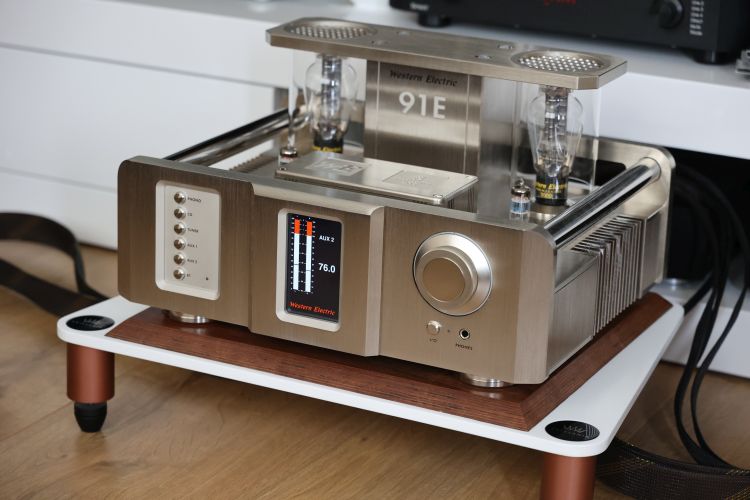
Christiaan,
I know its A bit off pricewise but i really like to hear where the recently reviewed Kinki Audio integraded amplifier stands in comparison with the Mark Levinson.
Albert
Hi ALbert, I’ve not heard them side by side or even on the same speakers but still, I think I can safely say that these two sound very different. The Kinki was all about a direct, super-dynamic and lively delivery focused on drive at the cost of some refinement and resolution. You can say it has a classic Naim sound. The Levinson is almost the inverse: super-refined and high-res and very sophisticated. The Levinson does not have any of the Kinki’s hardness and roughness and, with that, it also has a little less all-out slam. In a word: the Kinki is more rock and roll and the Levinson is more audiophile.
I have Levinson Separates in my NYC home. My wife and I purchased a second home on Hilton Head Island, South Carolina. As a result, I purchased a 5805. I was shocked how good it sounded for the money. Your characterization of how it sounds could not be more accurate. It’s an amazing device for the money that has the increbly refined Levinson signature sound.
Nice feedback, Adam! This new series sure offers a lot of value for money.
You didn’t get around to listening to the phono pre? Are you for real? What kind of hodgepodge reviewer are you? Too busy? Did Levinson only give you an hour to review the 5805? You had time to take multiple pictures of the amp, , I even see a fancy pants TT lurking in the background. And to say, “I have absolutely no doubt that this facility (phono MM/MC ) will also be highly competent” is a wee bit unethical in my opinion. Nice pictures though.